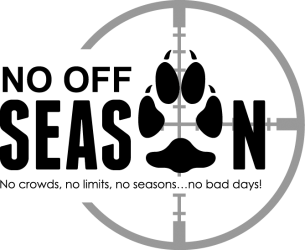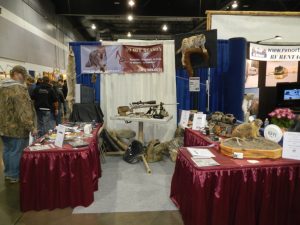Sage rat hunting in Oregon has exploded in popularity. More and more hunters are taking to the fields of Southeast Oregon each year to take advantage of the target-rich environment set up by the habitat found in the alfalfa pivots in this region. The alfalfa pivots are The Perfect Storm of soil, weather and nutrition that cause unnatural overpopulation of sage rats (Belding’s Ground Squirrels). So, how do we get the most out of our firearms to maximize our hits (and fun) when shooting sage rats? We’ll give you some ideas that may help!
Your sight-in strategy matters!
First off, sage rats are small targets. The body of a sage rat is not much larger than the cardboard inside a roll of toilet paper, and when the babies appear, the targets sometimes more closely resemble a walnut in size! Precision and accuracy are necessary to consistently hit them but your sight-in strategy can also make the difference as to whether you or your buddy takes home the hit-percentage bragging rights! Sight-in too closely and it increases the number of targets on which you need to hold over. Sight-in too far away and mid-range misses can rob you of your sharpshooter title! We’ll look at some sight-in distances for common cartridges used in the sage rat fields.
Rimfires
Rimfires are not all created equal. Historically, more sage rats have died at the hands of .22 long rifle (LR) shooters than any other firearm. Of those, the Ruger 10-22 has probably accounted for the vast majority of those kills. The 10-.22 is fast, accurate and inexpensive to shoot and does so with virtually zero recoil and a mild report. It’s a blast (pun intended) to walk your shots onto target well past 100 yards but the .22 works best at point-blank to 100 yards in the hands of most shooters. A strategic sight-in with a 75 yard zero will give you a great opportunity to make good hits in the effective range of this great little cartridge. (Choose hollow-point (hp) bullets for the best chance of anchoring your targets quickly and beware of ricochets!)
A new King? Around No Off Season a new king has emerged. The .17 HMR (Hornady Magnum Rimfire) has supplanted the .22 LR in popularity and ammunition expended. Accuracy and range are almost ideal for sage rat shooting, and although not as inexpensive as .22 LR, the ammunition is reasonably priced especially if you shop sales during the year. This round makes 150 yard shots relatively easy unless the wind is really blowing! You will give up little with a 100 yard zero for your .17 HMR rifle but 125 yards may be even better. With your groups printing in the center of a 125 yard bullseye, you won’t really think about holdover out to 150 yards, then holding at the top of the back or head (standing targets are much more forgiving in elevation) will garner quite a few extra yards to your effective range. A 150 yard zero is not a bad option for the experienced shooter who naturally holds a little low on the targets at the height of midrange trajectory around 100 yards. (Poly-tipped ammunition anchors ‘rats better and has fewer ricochets than the hollow-point bullets.)
The .22 WMR (Commonly referred to as a “.22 Magnum” or a .22 Mag” for short.) is the parent case for the .17 HMR. The .22 WMR cartridge carries more energy than the HMR but isn’t quite as flat shooting. A similar sight-in strategy will still get you in the ballpark. Bullet construction deserves a deeper look with this cartridge.
Purchasing poly-tipped .22 WMR ammo (i.e. Hornady V-max) is suggested. A .22 WMR with the original solid and hollow-point ammo is one of the highest ricocheting combinations requiring more care around irrigation pivots. In the hands of experienced shooters using sufficient restraint, it will work fine but less so with other shooters. While more expensive, you may find the poly-tipped ammo to be more accurate, flatter shooting and more deadly than the older, blunt-nose ammunition.
Finally, the relative newcomer to the rimfire ‘rat cartridges is a little speedster known as the .17 WSM. Utilizing cases for nail guns used in the construction field, this cartridge bridges the gap between the rimfire and centerfire worlds. For those wanting more reach but not wanting to handload, this is a great option. The report of the WSM is slightly louder than the HMR but the sound of the bullets hitting target is audibly louder as well. Calm days make this a legitimate 250 yard rimfire! Your sight-in strategy should reflect this. A 150 yard zero is the minimum suggested sight-in distance for this little rimfire. A 200 yard zero for the experienced shooters is a viable option. (Poly-tips versus hollow-points are still a great idea to minimize ricochets and maximize lethality.)
The Centerfire Zone
Centerfire varmint cartridges enter an entirely new realm of reach, energy and target reactivity! The .223 Rem is still at the top of the hill especially with those who don’t handload their ammunition. Other offerings include a multitude of .17, .204, and .22 caliber cartridges and wildcats that work splendidly for sage rats. Centerfires particularly offer something over the rimfires on the windy days which seem to happen frequently in sage rat country. Slightly heavier bullets deflect less in wind and the larger cases can push them faster creating laser-like trajectories and minimum wind deflection. A 200 yard zero will require only slight adjustments on horizontal targets at the height of mid-range trajectory usually occurring around 150 to 175 yards.
Although it has little to do with sight-in strategies, a few more tips on bullet selection are in order when you graduate to centerfires.
A major caveat when shooting the .223 cartridge is to resist the urge to buy the bargain basement, full metal jacket ammunition. It’s cheap, it’s tempting, and it’s dangerous! Full metal jacket bullets can be abbreviated “FMJ”. It may also be called “Green-tip” or “Ball ammunition”. If there is not a hollow point, exposed lead or a poly tip, it is full metal jacket construction. FMJ bullets ricochet terribly and are a major hazard to irrigation equipment, livestock and neighbors! No Off Season and other outfitters and landowners will not allow any FMJ bullets on their fields. Some hollow-point target ammunition also utilize tough bullet jackets that tend to ricochet. Always listen for the “zing” of skipping bullets. If it is occurring on a regular basis regardless of the cartridge or bullet, be extra careful about what is beyond your target. Every cartridge ricochets in certain condition; some are just worse than others.
Higher caliber varmint cartridges (6mm/.243 on up) as well as long range rifles/cartridges require the right circumstances to be safe. Another consideration for the larger cartridges is recoil. Larger cases and heavier bullets create more recoil. Even larger .22 caliber cartridges such as the .22-250 and .220 Swift, while extremely deadly and more effective in the wind, will likely cause the rifle to jump off target requiring a spotter to call the shot and robbing the shooter of some in-scope action. This can be mitigated with a suppressor or a muzzle brake but the latter increases muzzle blast significantly.
Sage rat hunting is one of the most fun past times the shooting sports has to offer. These sight-in strategies will help increase your effectiveness on these small, challenging targets and may help you get bragging rights when the dust settles and you’re rehashing the day’s sage rat shooting with your family and friends!

 Terry built a 6.5 SAUM last year but has had little time to shoot it. It performed admirably hitting this ‘chuck at 687 yards! A Stiller Predator action, Pac-nor barrel, McMillan A-3 Sporter stock, Jewell trigger, Defensive Edge muzzle brake and a Nightforce ATACR 5-25X scope round out the package.
Terry built a 6.5 SAUM last year but has had little time to shoot it. It performed admirably hitting this ‘chuck at 687 yards! A Stiller Predator action, Pac-nor barrel, McMillan A-3 Sporter stock, Jewell trigger, Defensive Edge muzzle brake and a Nightforce ATACR 5-25X scope round out the package.  After hitting his chuck, we got some valuable dope on his gun and load at 900 and 1030. Good stuff!
After hitting his chuck, we got some valuable dope on his gun and load at 900 and 1030. Good stuff!















